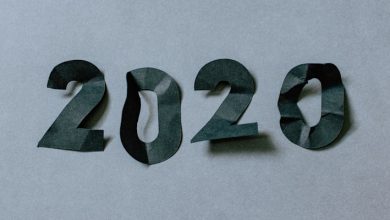How to Use Technical Analysis to Time Your Crypto Trades

- Understanding the basics of technical analysis
- Identifying key indicators for crypto trading
- Using charts to predict market trends
- Implementing support and resistance levels in your analysis
- Utilizing moving averages for better timing of trades
- Avoiding common pitfalls when using technical analysis in crypto trading
Understanding the basics of technical analysis
Technical analysis is a method used by traders to forecast future price movements based on historical data. By analyzing charts and patterns, traders can identify trends and make informed decisions about when to buy or sell assets such as cryptocurrencies. Understanding the basics of technical analysis is essential for successful trading in the volatile crypto market.
One of the key principles of technical analysis is the idea that historical price movements tend to repeat themselves. By studying past price data, traders can identify patterns that may indicate potential future price movements. These patterns can help traders determine when to enter or exit a trade, maximizing potential profits and minimizing losses.
Another important concept in technical analysis is support and resistance levels. Support levels are price points at which a cryptocurrency tends to stop falling and bounce back, while resistance levels are price points at which it tends to stop rising and pull back. By identifying these levels on a chart, traders can make more informed decisions about when to enter or exit a trade.
Identifying key indicators for crypto trading
When it comes to crypto trading, identifying key indicators is crucial for making informed decisions. These indicators help traders analyze the market and determine the best times to buy or sell cryptocurrencies. Some of the key indicators to consider include:
- Price Patterns: By studying price patterns, traders can identify trends and predict future price movements.
- Volume: High trading volume often indicates strong market interest and can be a sign of a potential price change.
- Relative Strength Index (RSI): The RSI measures the speed and change of price movements. It can help traders determine if a cryptocurrency is overbought or oversold.
- Moving Averages: Moving averages smooth out price data to help traders identify trends over time.
By keeping an eye on these key indicators and understanding how they interact with each other, traders can make more informed decisions when it comes to crypto trading. It is essential to use a combination of these indicators to get a comprehensive view of the market and increase the chances of successful trades.
Using charts to predict market trends
One of the most popular methods for predicting market trends in the world of cryptocurrency trading is using charts. By analyzing historical price data and identifying patterns, traders can gain valuable insights into potential future price movements.
There are several types of charts that traders commonly use, including line charts, bar charts, and candlestick charts. Each type of chart provides a different perspective on price movements, allowing traders to make more informed decisions about when to buy or sell their assets.
One of the key principles of using charts to predict market trends is the idea of support and resistance levels. Support levels are price points where a particular asset has historically struggled to fall below, while resistance levels are price points where the asset has struggled to rise above. By identifying these levels on a chart, traders can better predict when a price will bounce back or break through.
Implementing support and resistance levels in your analysis
Support and resistance levels are crucial aspects of technical analysis when it comes to timing your cryptocurrency trades. These levels represent points on a chart where the price of an asset has historically had difficulty breaking above (resistance) or falling below (support). By identifying these levels, traders can make more informed decisions about when to enter or exit a trade.
One effective way to implement support and resistance levels in your analysis is to use horizontal lines on a price chart. These lines can help you visualize where the price has struggled to move beyond in the past, indicating potential areas of support or resistance in the future. By paying attention to these levels, you can better predict how the price of a cryptocurrency may behave and adjust your trading strategy accordingly.
Another method for identifying support and resistance levels is to look for patterns in the price movements of a cryptocurrency. For example, if the price consistently bounces off a certain level and fails to break through, that level can be considered a strong area of support or resistance. By recognizing these patterns, you can anticipate how the price may react when it reaches these levels in the future.
Incorporating support and resistance levels into your technical analysis can help you make more strategic decisions when trading cryptocurrencies. By understanding where these levels are located and how they have influenced price movements in the past, you can improve your timing and increase the likelihood of successful trades. Remember to use a combination of methods to confirm these levels and always consider other factors that may impact the price of the cryptocurrency you are trading.
Utilizing moving averages for better timing of trades
Another useful tool in technical analysis for timing crypto trades is utilizing moving averages. Moving averages smooth out price data to create a single flowing line, making it easier to identify trends and potential entry or exit points. By using moving averages, traders can avoid making impulsive decisions based on short-term price fluctuations.
There are two main types of moving averages that traders commonly use: the simple moving average (SMA) and the exponential moving average (EMA). The SMA gives equal weight to each data point over a specified period, while the EMA gives more weight to recent data points. Traders can choose which type of moving average to use based on their trading strategy and risk tolerance.
One common strategy is to look for crossovers between different moving averages. For example, when a short-term moving average crosses above a long-term moving average, it may signal a buy opportunity. Conversely, when a short-term moving average crosses below a long-term moving average, it may indicate a sell opportunity.
It is essential to remember that moving averages are lagging indicators, meaning they are based on past price data. While they can help traders identify trends and potential entry or exit points, they should be used in conjunction with other technical analysis tools for confirmation. By incorporating moving averages into their trading strategy, traders can improve their timing of crypto trades and potentially increase their profitability.
Avoiding common pitfalls when using technical analysis in crypto trading
When using technical analysis in crypto trading, it is crucial to be aware of common pitfalls that can affect your trading decisions. These pitfalls can lead to inaccurate predictions and potentially result in financial losses. Here are some key points to keep in mind to avoid these pitfalls:
- Don’t rely solely on technical indicators: While technical indicators can provide valuable insights into market trends, they should not be the only factor you consider when making trading decisions. It is essential to also take into account fundamental analysis and market sentiment to get a more comprehensive view of the market.
- Avoid overcomplicating your analysis: It can be tempting to use a wide range of technical indicators and tools to analyze the market. However, using too many indicators can lead to conflicting signals and confusion. It is best to stick to a few key indicators that you understand well and have proven to be reliable.
- Don’t ignore risk management: Risk management is a crucial aspect of successful trading. It is essential to set stop-loss orders and adhere to them to limit potential losses. Additionally, avoid investing more than you can afford to lose in any single trade.
- Be cautious of market manipulation: The crypto market is known for its volatility and susceptibility to manipulation. Be wary of pump-and-dump schemes and other fraudulent activities that can distort market movements. It is essential to conduct thorough research and stay informed about market developments to avoid falling victim to such schemes.



